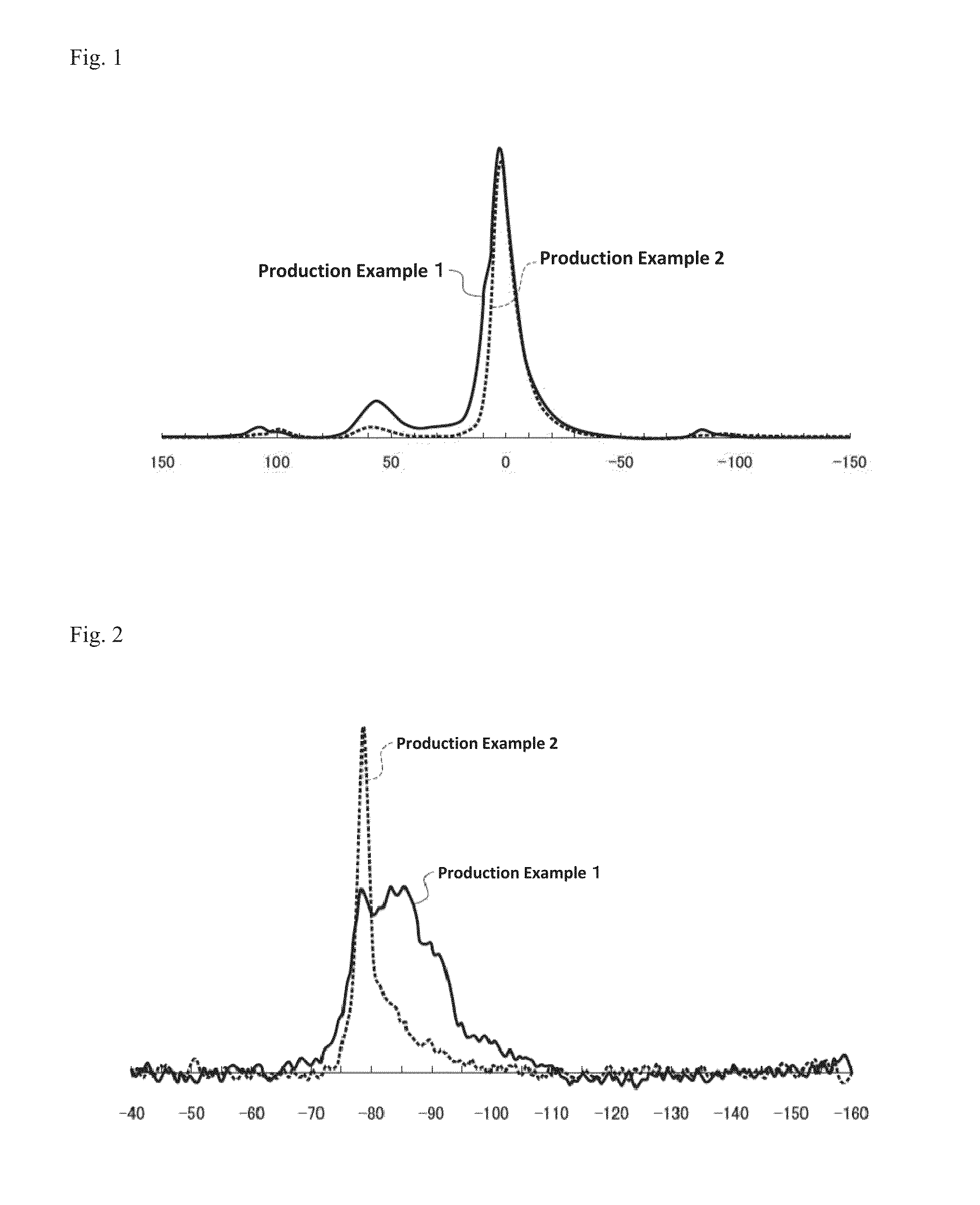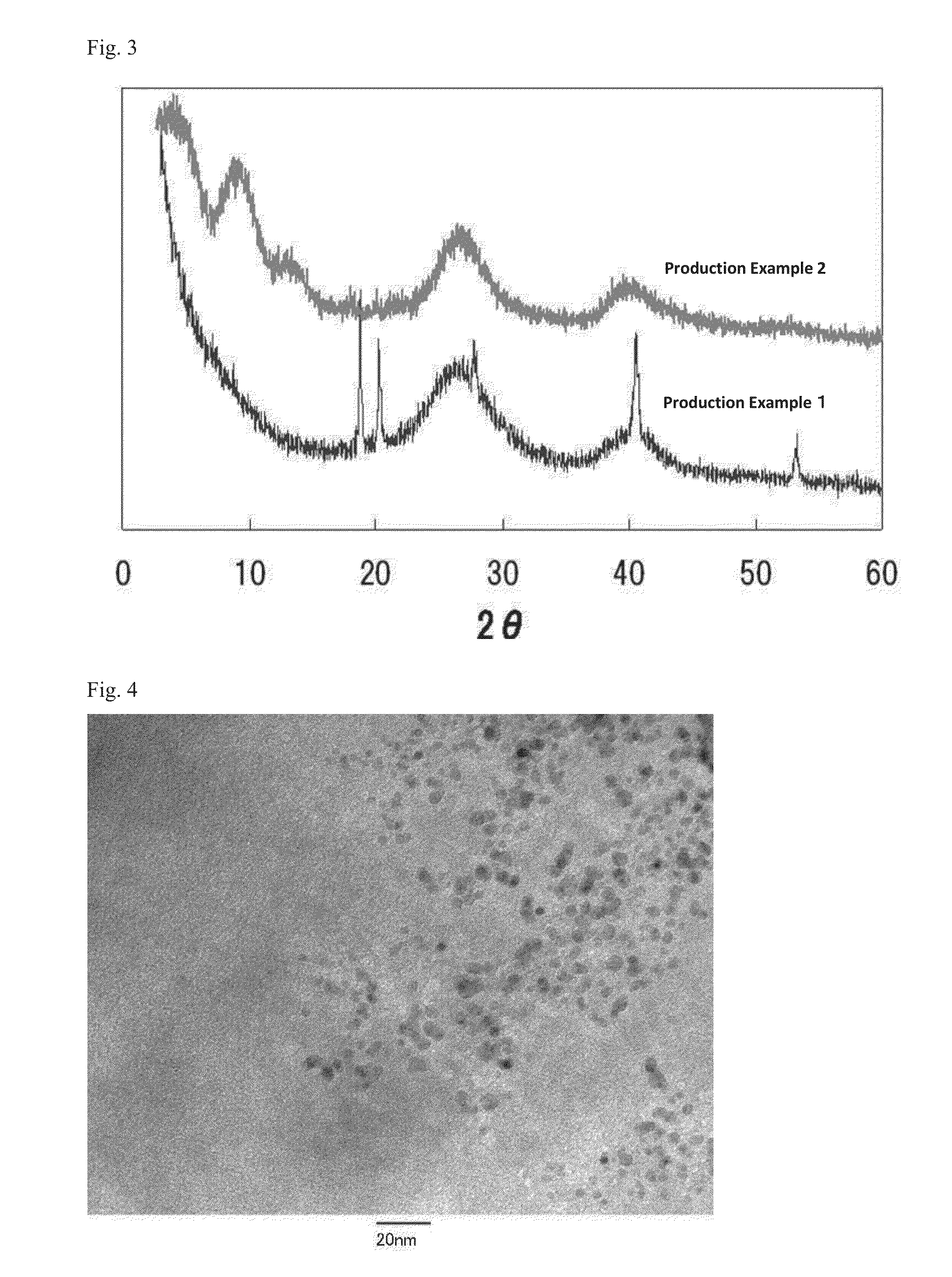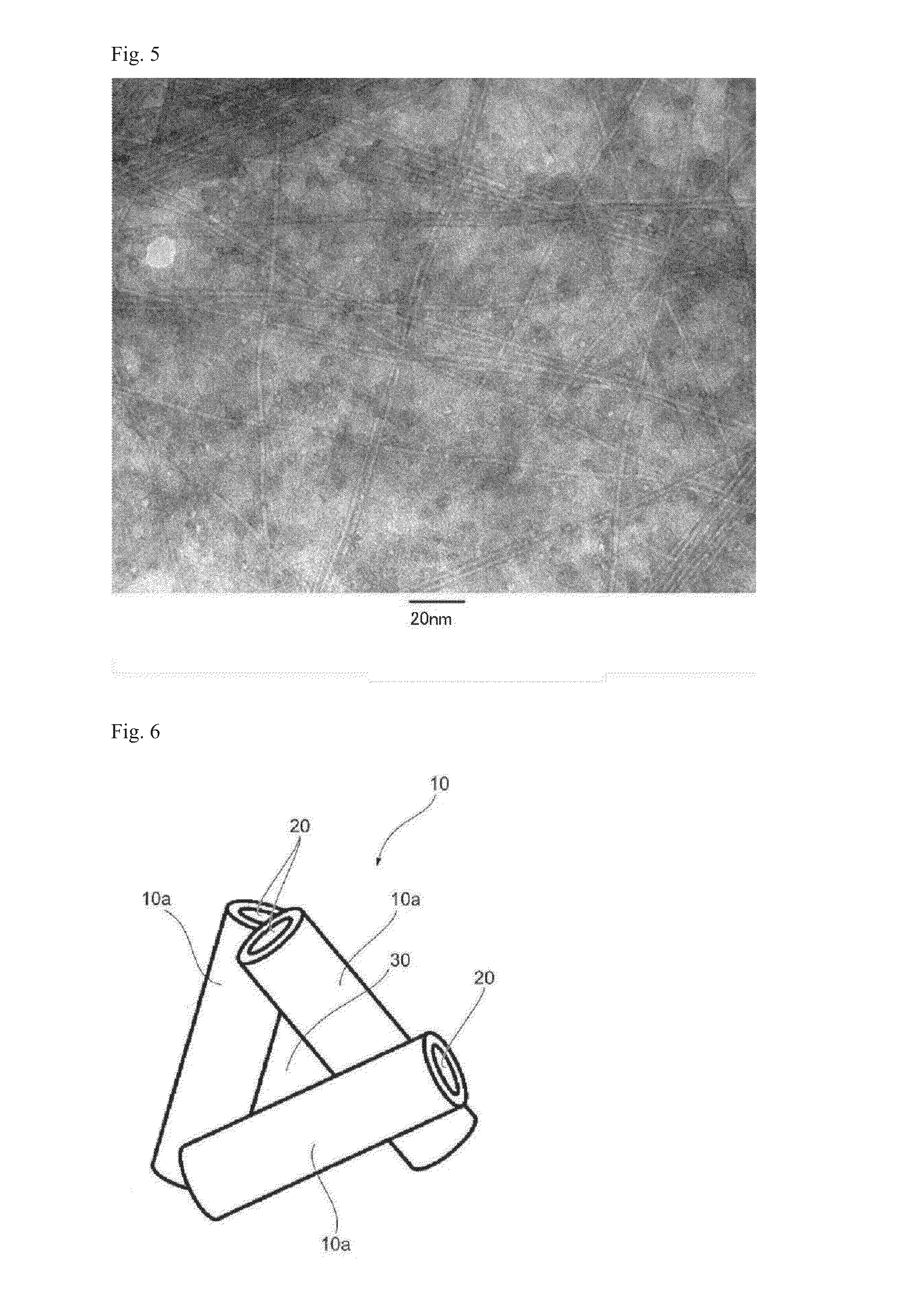Aluminum silicate composite, electroconductive material, electroconductive material for lithium ion secondary battery, composition for forming negative electrode for lithium ion secondary battery, composition for forming positive electrode for lithium ion secondary battery, negative electrode for lithium ion secondary battery, positive electrode for lithium ion secondary battery, and lithium ion secondary battery, composition for forming positive
- Summary
- Abstract
- Description
- Claims
- Application Information
AI Technical Summary
Benefits of technology
Problems solved by technology
Method used
Image
Examples
production example 1
[0309]To 500 mL of an aqueous solution of aluminum chloride (concentration: 700 mmol / L), 500 mL of an aqueous solution of sodium orthosilicate (concentration: 350 mmol / L) were added and stirred for 30 minutes. To this solution, 330 mL of an aqueous solution of sodium hydroxide (concentration: 1 mol / L) were added to adjust the pH to 6.1.
[0310]The solution after adjusting the pH was stirred for 30 minutes, and subjected to centrifugation with SUPREMA 23 (Tomy Seiko Co., Ltd.) as a centrifuge and NA-16 (Tomy Seiko Co., Ltd.) as a standard rotor, at 3000 min−1 (revolutions / min) for 5 minutes. Thereafter, a supernatant was discarded and a gel-like precipitation was redispersed in pure water, such that the volume of the dispersion was equal to the volume of the solution before the centrifugation. The desalting process by centrifugation as described above was performed three times.
[0311]The gel-like precipitation obtained after discarding the supernatant at the third desalting process was ...
production example 2
[0377]To 500 mL of an aqueous solution of aluminum chloride (concentration: 180 mmol / L), 500 mL of an aqueous solution sodium orthosilicate (concentration: 74 mmol / L) were added and stirred for 30 minutes. To this solution, 93 mL of an aqueous solution of sodium hydroxide (concentration: 1 mol / L) were added to adjust the pH to 7.0.
[0378]The solution after adjusting the pH was stirred for 30 minutes, and subjected to centrifugation with SUPREMA 23 (Tomy Seiko Co., Ltd.) as a centrifuge and NA-16 (Tomy Seiko Co., Ltd.) as a standard rotor, at 3000 min−1 (revolutions / min) for 5 minutes. Thereafter, a supernatant was discarded and a gel-like precipitation was redispersed in pure water, such that the volume of the dispersion was equal to the volume of the solution before the centrifugation. The desalting process by centrifugation as described above was performed three times.
[0379]The gel-like precipitation obtained after discarding the supernatant at the third desalting process was dispe...
example 1
[0404]As an aluminum silicate composite, imogolite composite A was produced by using Sample A.
[0405]Sample A and a polyvinyl alcohol powder (Wako Pure Chemical Industries, Ltd.) were mixed at a mass ratio of 100:70 and sintered at 850° C. in a nitrogen atmosphere for one hour, thereby obtaining imogolite composite A.
[0406]The carbon content of imogolite composite A was measured by thermogravimetry-differential thermal analysis (TG-DTA) at a temperature elevation rate of 20° C. / min, at 800° C. and for 20 minutes to retain. The mass decrease ratio was 10 mass %.
[0407]The R value of the imogolite composite A as measured by the following conditions was 1.0. The state of covering a surface of imogolite composite A was determined by performing mapping by Raman spectroscopy. As a result, the area not covered with carbon was very small, and most of the surface was covered with carbon.
[0408]The R value was measured by a Raman spectrometer (NSR-1000 Model, Jasco Corporation), and the obtained...
PUM
| Property | Measurement | Unit |
|---|---|---|
| Percent by mass | aaaaa | aaaaa |
| Percent by mass | aaaaa | aaaaa |
| Electrical resistivity | aaaaa | aaaaa |
Abstract
Description
Claims
Application Information
 Login to View More
Login to View More - R&D
- Intellectual Property
- Life Sciences
- Materials
- Tech Scout
- Unparalleled Data Quality
- Higher Quality Content
- 60% Fewer Hallucinations
Browse by: Latest US Patents, China's latest patents, Technical Efficacy Thesaurus, Application Domain, Technology Topic, Popular Technical Reports.
© 2025 PatSnap. All rights reserved.Legal|Privacy policy|Modern Slavery Act Transparency Statement|Sitemap|About US| Contact US: help@patsnap.com



